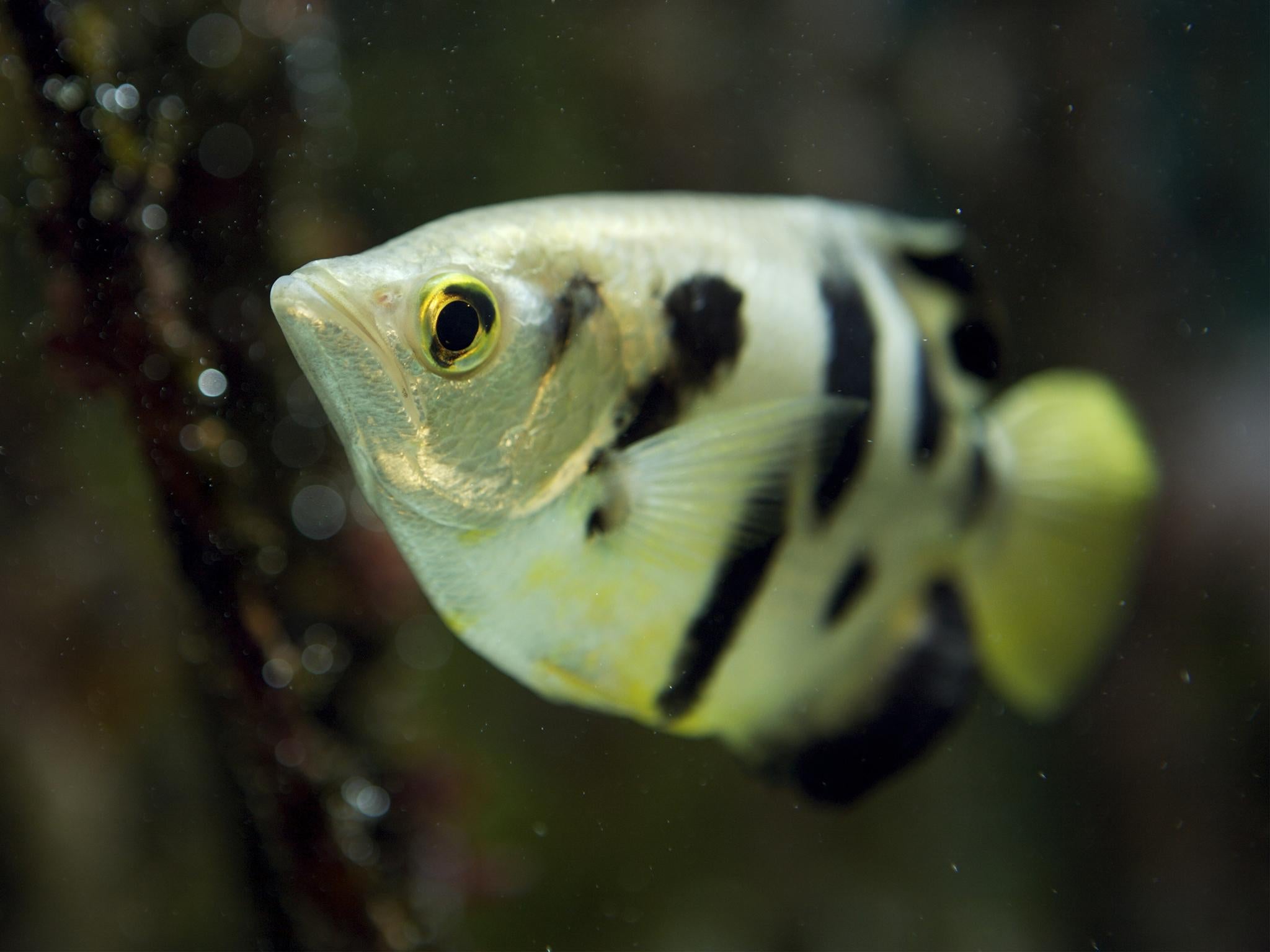Fish can recognise human faces, says Oxford University study
Archerfish have been trained to select the right face from a range of different images ‒ by spitting water at them

Your support helps us to tell the story
From reproductive rights to climate change to Big Tech, The Independent is on the ground when the story is developing. Whether it's investigating the financials of Elon Musk's pro-Trump PAC or producing our latest documentary, 'The A Word', which shines a light on the American women fighting for reproductive rights, we know how important it is to parse out the facts from the messaging.
At such a critical moment in US history, we need reporters on the ground. Your donation allows us to keep sending journalists to speak to both sides of the story.
The Independent is trusted by Americans across the entire political spectrum. And unlike many other quality news outlets, we choose not to lock Americans out of our reporting and analysis with paywalls. We believe quality journalism should be available to everyone, paid for by those who can afford it.
Your support makes all the difference.A species of tropical fish can differentiate between human faces, a study has found – the first time fish have been found to possess such powers of recognition.
Archerfish, distinguished by their ability to spit water jets to shoot prey out of the air, can accurately recognise one face from another during staged testing, a joint study from the University of Oxford and Queensland found.
The fish were trained individually to select faces on a monitor in view of their tank and pick out a face they had learned from 44 new faces by spitting a jet of water at the correct image.
The archerfish picked out the correct face 81 per cent of the time.
During the tests the fish were able to identify the faces through detailed feature recognition, even when the shapes and colours of faces were altered.
It was previously believed that only certain mammals, and primates in particular, had facial recognition capabilities due to the large size of their brains. Certain species of birds have also been found to “possess neocortex-like structures”, which aid with human facial recognition.
However, results of the study, which was published in the journal Scientific Reports, suggest that, despite having tiny brains, some fish may have highly-developed visual discrimination capabilities.
Dr Cait Newport, research fellow at the University of Oxford and co-author of the study, said: “Being able to distinguish between a large number of human faces is a surprisingly difficult task, mainly due to the fact that all human faces share the same basic features.
“If you consider the similarities in appearance between some family members, this task can be very difficult indeed.”
Subscribe to Independent Premium to bookmark this article
Want to bookmark your favourite articles and stories to read or reference later? Start your Independent Premium subscription today.
Join our commenting forum
Join thought-provoking conversations, follow other Independent readers and see their replies
Comments